Paludiculture Newsletter 1|2023
General information and news on peatlands and paludiculture
Paludiculture Exploration – funding and engagement for England
Three percent of greenhouse gas emissions in England come from drained peatlands. A new fund aims to minimize these through paludiculture. Community-based measures will also be supported.
Paludiculture Exploration – funding and engagement for England
The new £5m fund to promote the use of peatlands in England (UK) for sustainable farming was announced by the UK Government on 27th August 2022. The Paludiculture Exploration Fund (PEF) seeks to unlock barriers to making commercial paludiculture a reality. The initiative sits under the umbrella of the Nature for Climate Peatland Grant Scheme in England and is managed by Natural England.
The UK government have recognised that paludiculture offers a potential solution for maintaining the profitable use of lowland peatland whilst significantly reducing the greenhouse gas emissions associated with their current (dryland) agricultural use. In 2020, emissions from drained agricultural peatlands in England were estimated at 8.5 million tonnes carbon dioxide equivalents. This is around 3% of England’s emissions. The potential for paludiculture in England has been described in a report of a recent research project funded by the Department for Environment, Food & Rural Affairs (Defra): Defra-LP2-paludiculture-report-April-2020.pdf.
Commercial paludiculture in the UK is at a very early stage. There are many barriers to be overcome. This is where the PEF comes in. There are a number of trials already underway in England investigating the potential of sphagnum moss, used as a replacement for peat in horticulture. The PEF can support trials such as these to expand, as well as supporting new trials and pilots investigating new wetland crops. Innovators in the UK and across Europe are also paving the way for new products that use paludiculture crops, such as typha (cattail) to make building materials as well as insulation for clothing. The PEF can support innovators to develop such products and investigate new uses and markets for them. Farming on rewetted peatland will also require the development of practical sowing, growing and harvesting equipment, as well as processing tools and methods to manufacture a desirable product. The PEF will fund projects to adapt and develop machinery that enables productive farming in wet conditions. The PEF was open for funding applications until early March 2023.
As well as offering grant funding, the PEF also has an engagement strand that will bring together the communities and stakeholders that might be thinking about paludiculture. By developing a Community of Practice for paludiculture in England we will learn together more quickly about the practicalities of adopting these crops, as well as develop knowledge and understanding around these exciting new opportunities. The first Paludiculture Event (Exploring the way forward for wetter farming in England) took place on 11th and 12th January 2023 in Cambridge when some 90 people gathered to share knowledge through presentations and discussions to explore the challenges and opportunities for paludiculture together. Knowledge was shared with foreign experts, including Dr Sabine Wichmann (Greifswald Mire Centre, Germany) and Dr Jeroen Geurts and Aldert van Weeren (The Netherlands). A range of on-going projects from across England also shared their experiences. Event presentations and reports of the discussions can be found here: Exploring the Way Forward. All are welcome to join the paludiculture community at paludiculture.org.uk to find out about events and projects and share information via the Forum. It is to be hoped that the currently still relatively small fund will be continued and expanded!
Contact: Jim Milner, Natural England, peatlandscheme@naturalengland.org.uk; Engagement team: paludiculture@niab.com
Harakeke – Paludiculture perspectives in Aotearoa, New Zealand
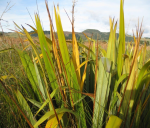
Where Common Reed (Phragmites australis) is considered the worst weed, perhaps Harakeke offers an opportunity for paludiculture? People in New Zealand are starting to think about it.
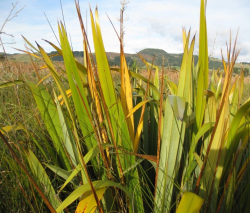
Harakeke – Paludiculture perspectives in Aotearoa, New Zealand
To date, apart from a small production of Sphagnum moss, there is no wet peatland use in New Zealand. Phragmites australis, commonly used in Europe, is unfortunately unsuitable in Aotearoa (entirety of New Zealand in Māori). It is considered an undesirable organism and potentially the country's worst aquatic weed. But institutions such as Landcare Research-Manaaki Whenua and the Waikato Regional Council are now targeting other potential plants: Bulrush Typha orientalis and New Zealand Phormium tenax. Typha orientalis is very similar to the European bulrush and can be utilised similarly. But Phormium tenax also known as Harakeke in the Māori language, is particularly exciting.
Botanically, Harakeke is a type of lily, but it looks more like a type of flax. Its leaves are dark green to light green, sometimes even reddish. The leaves are long and stiff, and the whole plant can grow up to five meters high. The reddish-orange Harakeke produces a sweet nectar in spring that is especially liked by Tuis, native birds with a characteristic song and small white ball of feathers under their throats.
Harakeke likes to grow in waterlogged organic soils and is tolerant of nutrient-poor conditions. Harakeke could, for example, be grown well in succession where Typha was previously cultivated. However, even if it appears to be a promising successional crop, Harakeke may suffer biomass decline under nutrient-poor, acidic conditions. Continuous cultivation of both Harakeke and Typha would still need more detailed analyses on long-term growth requirements with possible addition of nutrients. The latter is controversial. To avoid establishing another monoculture with paludiculture and to do good for biodiversity, it is important to consider mixed paludiculture at a site.
In Aotearoa, Harakeke is an iconic plant that has been used by people for centuries. Harakeke's strong fibres are similar to flax in the northern hemisphere. Harakeke has many uses, including fibre, dyes, fishing, hunting and building, and even medicines. Traditional Māori Raranga (weaving) with Harakeke continues to be widely practiced, for both cultural and economic purposes. Cultivation may thus offer opportunities for a new niche market. This should definitely be led by local Māori groups.
Author: Rahel Bauerdick, rahelina@hotmail.co.nz
This contribution is based on an internship with the National Wetland Trust of New Zealand and the Landcare Research Institute - Manaaki Whenua. The author is seeking contact with people involved in the physical properties of peat soils and the geomorphology of peatlands.
Peatlands for bookworms

A new book "Das Moor", the Peatland Atlas, a paludiculture implementation guidebook and a 440-page directory of paludiculture plants - all around the Greifswald Mire Centre, the production of reading material is rumbling. From laymen to specialists, there is something for everyone.

Peatlands for bookworms
Factual and personal at the same time is the new book Das Moor by GMC director Dr Franziska Tanneberger and Vera Schröder. A touching read about the love of nature and a peatland expert who turned into a climate conservationist, describes the dtv publishing house. And "Great read for a rainy Saturday afternoon!" tweeted the renowned climate scientist Prof. Stefan Rahmstorf. On 256 pages, peatlands become quite understandable - also for those who are aware of the climate crisis but do not yet know the importance of these landscapes for it. Solidly underpinned with the latest findings of peatland research, the book explains how yesterday and today, local and global are interrelated - from incipient drainage since the Middle Ages to the current IPCC report.
On 50 pages and 52 illustrations, the Mooratlas - Daten und Fakten zu nassen Klimaschützern not only illuminates the history of peatlands, their importance as unique habitats for the global climate and biodiversity, as well as their destruction with local and global consequences. It also explains how we can protect peatlands and restore their functions, and how wet peatlands work for climate protection and can be used in paludiculture. Published by the Heinrich Böll Foundation, Bund für Umwelt und Naturschutz Deutschland (BUND) and Succow Foundation, partner in the Greifswald Mire Centre, the Peatland Atlas also shows how politics and society can act now for more peatland protection.
Implementing paludiculture on a peatland, converting an entire farm to “wet”, or producing the right biomass for a new product - how does it work? Answers are provided in the new Leitfaden für die Umsetzung von Paludikultur by Anke Nordt, Susanne Abel, Sophie Hirschelmann, Christina Lechtape und Josephine Neubert in the GMC proceedings. It is aimed at farmers, landowners, project sponsors, water and soil associations, government agencies, agricultural advisors, research institutions, and potential biomass manufacturers. The guidebook covers five areas: Suitability of sites, planning and permits for the conversion into a paludiculture area to practical tips for the establishment and management of the area as well as the utilization of the produced biomass and support - including examples of implementation.
Which plants are suitable for paludiculture in the Holarctic is presented in the publication Potential Paludiculture Plants of the Holarctic by Susanne Abel und Tristan Kallweit. On 440 pages, 95 plant species from the Database of Potential Paludiculture Plants (DPPP) are portrayed. Most are promising for sustainable wet land use on peatlands. The paludiculture potential, e.g. in terms of new peat formation, differs substantially between species. In the plant portraits, comprehensive information has been compiled on the characterization of the species, site requirements, cultivation as well as possible uses of the plant.
Peat ban in United Kingdom
A peat ban in the United Kingdom is expected to come into force in 2024. Already, things are not looking bad in this regard. Supermarkets offer alternative substrates and 15% of the horticultural businesses contacted in a government survey already operate peat-free.
Peat ban in United Kingdom
Approximately 30 million households in the UK engage in some form of gardening, and to a large degree that involves the use of peat-based substrate, using around 2 million cubic metres of peat, releasing half a million tonnes of CO2 per year. Whilst this is not a huge share of the UK’s total carbon footprint, phasing out peat for ornamental uses seems an easy win for the climate. Two thirds of these are imported from other European countries such as Ireland, so this is directly damaging the environment outside of the UK.
A peat ban was first announced in 2010, with an aspiration for retailers to voluntarily removed peat from products sold to amateur gardeners by 2020, and a full ban for both amateur and professional growers by 2030. Whilst there were slow changes, the 2020 deadline passed with most substrates sold still containing peat, although the overall volume had reduced by 25%.
In December 2021 the government announced a consultation on ending the sale of peat for horticulture by 2024 in England and Wales (sales of peat in Scotland and Northern Ireland are matters for the devolved administrations). The main outcome of the consultation (results published in August 2022 - Summary of responses and government response - GOV.UK (www.gov.uk)) was overwhelming support for a ban, with 95% of respondents supporting it. In response the government announced that this would go ahead. This may be in part due to the support from the Royal Horticultural Society, the UKs largest gardening charity, who have been peat free in their own gardens for some time and have encouraged their members to avoid the use of peat. The consultation responses also show that about 15% of the horticultural businesses that responded are already peat free.
Most UK supermarkets and garden centres now stock peat free products, and the quality is generally as good as peat-based substrates for everyday gardening such as growing tomato seedlings. The proposed ban has not been welcomed by all parties however – the Horticultural Trade Association has called for there to be no regulation and a voluntary target of 2025, with a focus instead on removing barriers to alternatives. (HTA | HTA response to Defra announcement on horticultural peat).
Barring a major change in priorities for the Department for Environment, Food and Rural Affairs (Defra), it seems likely that there will be a ban in place by the end of 2024 on the sale of bagged peat as compost. It will be interesting to see how quickly retailers move in advance of this, and how well the wider public (the ~29,995,000 domestic gardeners who did not respond to the survey) take to the new products. From the author’s own observation, for the spring of 2023 50% of the local supermarkets are primarily selling peat free bagged compost. However, for the time being horticultural growers will still be allowed to use peat-based products until 2030, despite calls for this to be brought forward (UK Government confirms ban on all peat-based gardening products will not be implemented until 2030 | The Wildlife Trusts). So anyone buying bedding plants or other pre-grown plants for their garden will still find themselves – indirectly – buying peat.
Author: Harry Mach, CANAPE Project Manager / United Kingdom
Deceiving good news
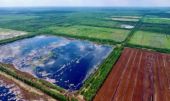
In terms of area, the loss of wet peatlands worldwide is not as great as is often claimed, a recent study in the scientific journal Nature has found. At the same time, it shows that four million km² of wetlands have disappeared, about 0.5 million km² of those are wet peatlands. These cause 4-5% of global greenhouse gas emissions - small area, but big consequence.
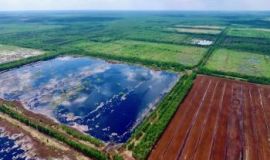
Deceiving good news
The global loss of wetlands is smaller than previously assumed, according to the recent study Extensive global wetland loss over the last three centuries in the internationally renowned scientific journal Nature. Peatland scientists from the University of Greifswald, partner in the Greifswald Mire Centre, have contributed data from their Global Peatland Database and from the historical holdings of the local peatland library. The results now help to better assess the climate impact of peatlands, e. g. to quantify the change in carbon storage and in methane emissions. It also allows conclusions to be drawn about the impact of wetland loss and how wetland restoration can be better planned.
The study by an authors' collective led by Standford University shows that only 21-35% of the world's wetlands have been lost since 1700, instead of 50-87% as previously thought. In a historically first reconstruction, the scientists combed through thousands of records of drainage and land-use change in 154 countries for the study to compare them with the current distribution of drained and altered wetlands to get a picture of the state since 1700.
"In terms of area, the loss is not as great as is often claimed. What seems to be good news at first glance, however, should not deceive us. Worldwide, about four million km² of wetlands have disappeared, of which about 0.5 million km² are wet peatlands. However, drained peatlands are responsible for 4-5% of global greenhouse gas emissions: they are relatively small areas but with huge consequences!" says Prof. Dr Dr Hans Joosten, emeritus professor and co-author of the study. The study can be used to better quantify the change in carbon storage by wetlands and in methane emissions. It also allows conclusions to be drawn about the impact of wetland loss and how wetland restoration can be better planned.
A project presented
Paludipilot project for peatland soil protection in four federal states

Four long-term pilot projects for peatland soil protection are currently testing in Germany how drained and intensively used peatland soils can be converted to wetland utilisation. Funded by the Federal Ministry for the Environment, Nature Conservation and Nuclear Safety with a total of 48 million euros, these projects for peatland and climate protection are part of the Climate Protection Plan 2050. The PaludiMV, BLuMo, Klimafarm and MoLaKli projects, all managed via Z.U.G., are presented below.
Paludipilot projects for peatland protection in four federal states
PaludiMV – paludiculture project in Mecklenburg-Vorpommern
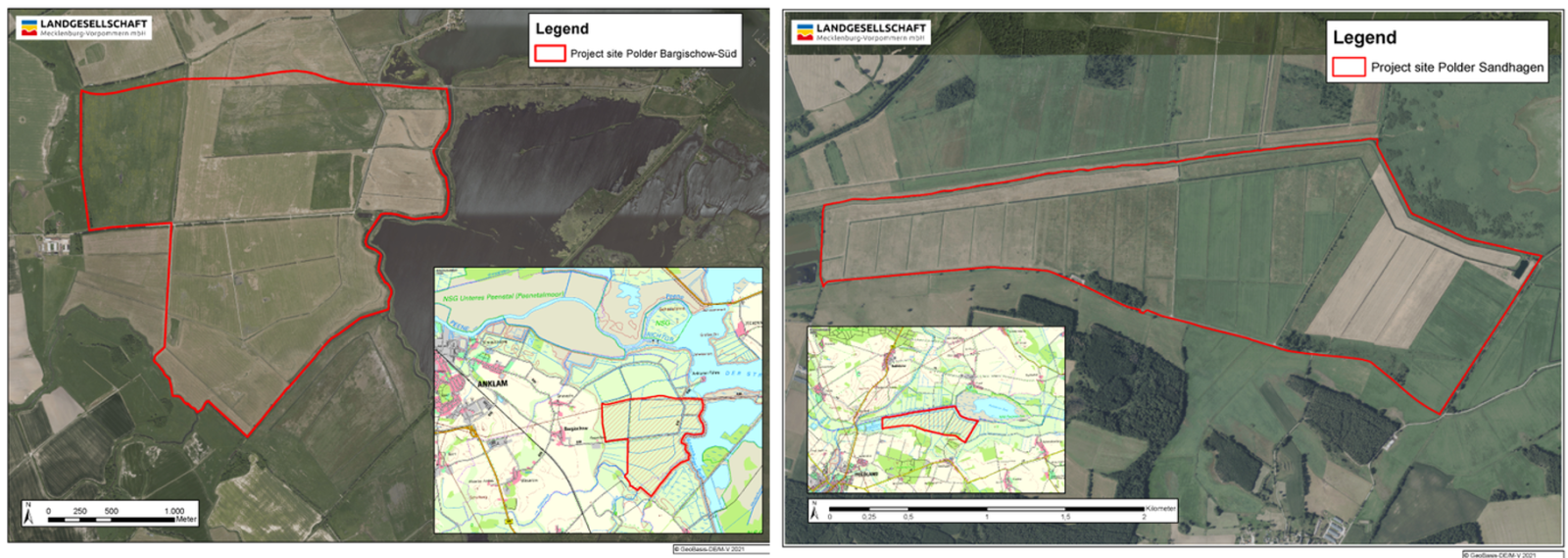
Polder Bargischow- South (approx. 520 ha): Wet grassland use with the greatest possible synergy of climate protection and nature conservation concerns (e.g. meadow breeding bird protection).Picture: Mira Kohl |
Polder Sandhagen (approx. 275 ha): Optimization of paludi-"cash crops" with high market potential and climate protection effect, taking into account the adjacent nature conservation requirements.Picture: Mira Kohl |
The project aims to show how climate protection can be combined with an economically reasonable and sustainable agricultural use of peat soils. On two fen sites in Western Pomerania and eastern Mecklenburg, on the polder Bargischow-Süd and the polder Sandhagen, it undertakes the rewetting of a total of 900 ha and tests the agriculture in paludiculture. The long duration of 2021-2031 enables implementation and research from the establishment of the areas to harvesting and innovative utilization of the biomass, for example as construction and insulation material or packaging material. The project aims to provide economic and ecological insights about long-term paludiculture practices on a large scale along the entire production chain, because even for well-known plant species from the peatland, such as reeds and bulrushes, there is still little data and experience for this. At the same time, PaludiMV shows exemplary solutions for reducing greenhouse gas emissions from previously drained and used peatland soils. Project partners are the Landgesellschaft Mecklenburg-Vorpommern and the University of Greifswald. The Landgesellschaft MV leads the collaborative project, coordinates and takes responsibility for the preliminary planning, structural measures to raise the water level, the establishment of paludiculture and takes over the inventory management. The University of Greifswald carries out the accompanying scientific investigations and the feedback of the results into the area-related project measures.
Author: Mira Kohl, mira.kohl@lgmv.de, Landgesellschaft Mecklenburg-Vorpommern
BLuMo - Climate-friendly preservation of Brandenburg's fen peatlands - Initiation of peatland-preserving damming and agriculture
At the beginning of 2022, in Brandenburg, the pilot project BLuMo started - a ten-year collaborative project for climate-friendly and peat soil conserving agriculture on rewetted peatlandss. It tests wet land management and, above all, develops material utilization options for biomass from wet peatlands – for example, the adapted mowing of grassland and wet grazing by water buffalo. The project areas, which were selected as representative for Brandenburg, are located in the Rhinluch, Randow-Welsebruch and Möllmer Seewiesen. The water level will initially be raised on a total of 750 ha. BLuMo is establishing cooperation with agricultural holdings in the project areas to support the development of suitable procedures and techniques. The project is testing adapted management methods on a practical scale and their feasibility in terms of crop cultivation as well as business management. BLuMo also establishes cooperation with companies on new process and value chains. An accompanying monitoring evaluates the findings on the climate impact of a peatland-conserving dam management as well as the ecological effects of utilization methods on wet peatland soils. The project is being carried out by the Landesamt für Umwelt Brandenburg (LfU) together with the Leibniz Institute for Agricultural Engineering and Bioeconomy (ATB).
Author: Anje Marten, anje.marten@lfu-brandenburg.de, Landesamt für Umwelt Brandenburg
Klimafarm - ecologically and economically viable peatland soil conserving grassland management in Schleswig-Holstein
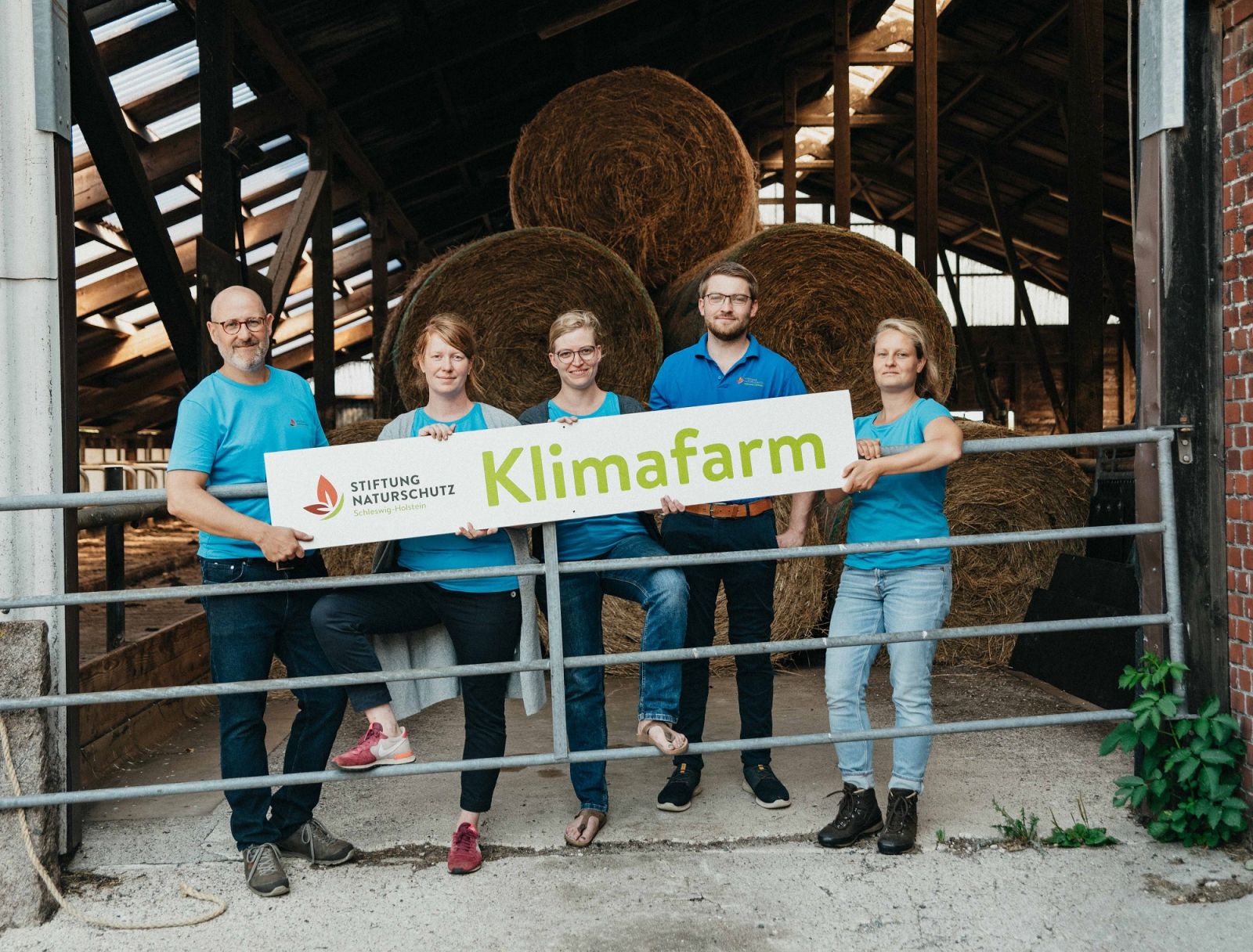
The Klimafarm Project Team of the Stiftung Naturschutz Schleswig-Holstein
Arndt Behrendt (Media and communication), Dr. Elena Zydek (Project Management), Inga Baasch (project administration), Mathes Holling (Operations Management), Dr. Wiebke Schuster (Peatland rewetting) (f.l.t.r.) (Picture: StN S-H)
The ten-year project Klimafarm of the Stiftung Naturschutz Schleswig-Holstein (SH) combines the rewetting of peat soils with agricultural use since 2021. The centerpiece is the farm of the same name, which will be built by the Stiftung Naturschutz in Erfde over the next few years as a pilot farm for agricultural use of the outgrowth from peat soils on a former dairy farm in the Eider-Treene-Sorge lowlands. The drained peatlands in Schleswig-Holstein emit a total of 2.8 million tons of CO2 equivalents. The proportion of drained peatlands in the total greenhouse gas emissions in the northernmost federal state is 12%. Therefore, first of all, the reduction of GHG emission of more than 20.000 CO2-eq is one of the goals of the climate farm. Due to the natural landscape structure, large-scale, drained and long intensively used fens are found along the west coast and in the lowlands of the Eider-Treene-Sorge region. Especially here, Klimafarm wants to develop climate-friendly products from the mown material of wet peatland grassland and establish a value chain together with companies. The mown material is a challenge due to its heterogeneous composition of reeds, grasses, sedges and rushes. Cultivation of pure crops is not planned. Another goal is the transfer of knowledge. Since the project area also plays a central role for the protection of meadow birds in Schleswig-Holstein, Klimafarm adapts the methods that protect the peatland soil to the occurrence of meadow birds. The aim is to keep the areas for agricultural use open while keeping wet utilization economical. Klimafarm is also intended to become a meeting place and to offer events for farmers and other stakeholders from practice, research and politics. Farm days for the public will be organized and an exhibition on peatland, climate protection and paludiculture is planned. The Stiftung Naturschutz Schleswig-Holstein is implementing the climate farm project with a total volume of 15.5 million euros together with the Christian-Albrechts-University of Kiel and other partners.
Author: Arndt Behrendt, arndt.behrendt@stiftungsland.de, Stiftung Naturschutz Schleswig-Holstein
MoLaKlim - MoorLandwirtschaft für Klimaschutz Allgäu (Bavaria)
The project has been established since January 2022 under the sponsorship of the district of Ostallgäu, with the Hochschule Weihenstephan-Triesdorf (HSWT, Prof. M. Drösler) and the Bayerische Landesanstalt für Landwirtschaft (LfL, Institut für Landtechnik und Tierhaltung, S. Thurner) as collaborative partners. Central element of the project are measures of an adapted land use on rewetted fen areas, which are privately owned and under agricultural cultivation. The planning and implementation of the measures is primarily concerned with gaining knowledge about possible sustainable and regional forms of land use on peat soils and their effects on the climate. The solutions are intended to combine climate protection through rewetting and profit-making intentions and to demonstrate them on a pilot scale. For this purpose, a close and trustful cooperation with landowners and farmers takes place, who are already willing to engage in this process. Sufficient water retention or water supply to achieve high water levels (aim: average water level 10 cm below ground level) for the preservation of the often heavily degraded fen sites, are also central issues in the Allgäu. The local and regional hydrological systems have been strongly changed in the last 150 years, groundwater levels have often been lowered over large areas. Conditions are more relaxed only in the southern part of the district with more than 1200 mm of annual precipitation, where water level aims can usually be achieved by the controllable damming of ditches. In order to enable farmers to follow the way of wet cultivation permanently, new utilization and sales opportunities shall be created. The most important role in the region is played by the utilization of heterogeneous plant populations. So far, only traditional litter utilization for stables is known, but even for this, sites were often drained. For new processes, the most promising appear to be defibering, for example for the production of insulation boards, or thermal breakdown into platform chemicals for recyclable bioplastics. However, there are no processors in the region so far, so a high level of effort is required here for introduction. Diverse landscape structures and small-scale ownership and operating structures are a challenge in the Allgäu region. The project is currently working intensively with the respective owners and land managers on site at four locations. There, it is being developed which measures can be set up in a practical way on their private agricultural land and can be integrated into the farm structures.
Author: Andreas Stauss, Andreas.Stauss@lra-oal.bayern.de, Landkreis Ostallgäu
News from other paludiculture projects
Moor must-see

Seven minutes of peatland info with beautifully animated illustrations by Sarah Heuzeroth.
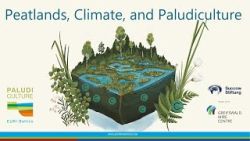
Moor must-see
What is a peatland, what is the current state of peatlands? Why are peatlands drained but should be rewetted? Why is this important for us and the world's climate, and at the same time an opportunity for sustainable use? This new video on peatlands, climate, and paludiculture answers these and many more questions with beautifully animated illustrations by Sarah Heuzeroth. Seven minutes of concentrated peatland knowledge - in English for an international reach. This film was produced as part of the project Carbon capturing by Baltic peatland farmers of the Succow Foundation and partners, funded by the European Climate Initiative (EUKI).
Zukunft Moor
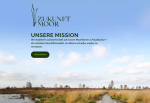
A profitable business model aims to become the large-scale implementation of wet peatland management for and with farmers. This is the goal of the privately initiated project.
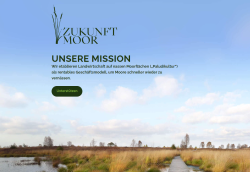
ZukunftMoor
Farmers agriculturally use approx. 80 % of the drained peat soils in Germany. In order to rewet their land, they need economic incentives and perspectives. Many pilot projects and research projects have shown that paludiculture can reconcile agriculture and climate protection and be economically profitable. The increasing demand for renewable raw materials, such as in horticulture, for ecological construction or for packaging, makes it clear that there is market potential for paludi raw materials from wet peatland agriculture. However, because there is still too little paludi biomass produced on the supply side and paludi products are not yet competitive on the demand side, functioning paludi markets and value chains have not yet been established.
For a Paludi transformation in Germany, investments in "Paludi at Scale" - the large-scale implementation of wet peatland management - are needed. The privately initiated ZukunftMoor project wants to establish "Paludi at Scale" as a profitable business model for and with farmers. For the supply side, they want to rewet a drained peatland area of about 1000 hectares in northern Germany and produce Paludi biomass for utilization. At the same time, they want to develop Paludi products with utilizers and bring them to their market maturity. In doing so, they do not want to stay with their farm: Together with farmers, industrial users and the local population, they want to initiate new value creation with the Paludi transformation via regional clusters.
The ZukunftMoor team consists of entrepreneurs with experience in agriculture, the startup sector, business and policy consulting. They work closely with the Greifswald Mire Centre. More information about the background of the initiative and the team can be found at https://www.zukunftmoor.de/zukunftmoor-gmbh-en.
Contact: Info@zukunftmoor.de
Peatlands via app
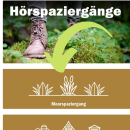
The audio walk "Peatlands near Greifswald" takes residents to the peatlands of the Hanseatic city of Greifswald - via app. A good example of how local authorities, peatland protectors and scientists can use new media and raise awareness of peatlands and climate among new target groups.
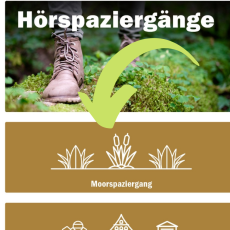
Peatlands via app
For "Peatland to the ears" on February 2nd 2023, the international World Wetland Day, a first peatland audio walk was published in the Greifswald-App. It leads to the peatlands around Greifswald - citizens and visitors alike can now explore them via app on smartphone or tablet.
The walk across the "meadows near Greifswald", which Caspar David Friedrich captured in his painting of the same name, is a bit like "I see something you don't see." There is much to discover that is not visible at first glance. For instead of meadows, the painter's painting is about peatlands outside the city gates. The audio walk was developed by the city of Greifswald and the Succow Foundation's MoKKa project. The Greifswald agricultural initiative and the city's peatland management were also involved – and it is also about paludiculture. The audio walk can be used on site but also from home and is based on the brochure Peat lands near Greifswald. Published by the Succow Foundation, it is available at the city information office.
Events
All current events are compiled in our online calendar.
Literature
Borchers, M. et al. (2022) Scoping carbon dioxide removal options for Germany – What is their potential contribution to Net-Zero CO2? Frontiers in Climate. https://doi.org/10.3389/fclim.2022.810343
Czubaszek, R., Wysocka-Czubaszek, A., Wichtmann, W., Zając, G. & Banaszuk, P. (2023): Evaluation of common reed and maize silages co-digestion on methane yield. Energies 2023, 16, 695; https://doi.org/10.3390/en16020695
de Jong, M., van Hal, O., Pijlman, J., van Eekeren, N., Junginger, M. (2021) Paludiculture as paludifuture on Dutch peatlands: An environmental and economic analysis of Typha cultivation and insulation production. Science of The Total Environment Vol. 792. https://doi.org/10.1016/j.scitotenv.2021.148161
del Castillo Torres, D., Alvarado, L.F., del Aguila Pasque, J. (2021) Superalimento amazónico, y los beneficios del manejo y conservación de los “aguajales” para el desarrollo regional amazónico. Parque Gonzales Prada N° 396, Magdalena del Mar Lima –Perú. ISBN Nº 978-9972-778-16-2, Aguaje-Doc (profonanpe.org.pe)
Veröffentlichung Torfabbau und –Nutzung in Deutschland und Europa: ein Flussmodell Hirschler & Osterburg Mires & Peat im Druck
Flanagan, E. et al. (2022) Chronic Consumption of Cranberries (Vaccinium macrocarpon) for 12 Weeks Improves Episodic Memory and Regional Brain Perfusion in Healthy Older Adults: A Randomised, Placebo-Controlled, Parallel-Groups Feasibility Study. Frontiers in Nutrition. https://doi.org/10.3389/fnut.2022.849902
Gerschler, S., Guenther, S., Schulze, Ch. (2022) Antibiofilm Activity of Sundew Species against Multidrug-Resistant Escherichia coli Strains. International Journal of Molecular Sciences. Vol. 23. https://doi.org/10.3390/ijms232213720
Haldan, K., Köhn, N., Hornig, A., Wichmann, S., & Kreyling, J. (2022). Typha for paludiculture—Suitable water table and nutrient conditions for potential biomass utilization explored in mesocosm gradient experiments. Ecology and Evolution, 12, e9191. https://doi.org/10.1002/ece3.9191
Haldan, K., Kuprina, K., Haase, M. I., Kieckhäfer, F., Schade, L., Schmoldt, J., Schock, L. S., Stein, A., Wille, A., Schnittler, M., Bog, M., Kreyling, J. (2023) Choose Wisely: Great Variation among Genotypes of Promising Paludiculture Crop Phragmites australis. Plants 2023, 12(5), 1045. https://doi.org/10.3390/plants12051045
Hemingway, A. W., Wilcox, D. A. (2022) Response of Typha to phosphorus, hydrology, and land use in Lake Ontario coastal wetlands and a companion greenhouse study. Wetlands Ecology and Management Vol. 30. https://doi.org/10.1007/s11273-022-09885-1
Hinzke, T., Tanneberger, F., Aggenbach, C. et al. (2022) Response Patterns of Fen Sedges to a Nutrient Gradient Indicate both Geographic Origin-Specific Genotypic Differences and Phenotypic Plasticity. Wetlands 42, 113. https://doi.org/10.1007/s13157-022-01629-4
Neubert et al. (2022) Endbericht PaludiPrima https://www.fnr.de/ftp/pdf/berichte/22026017.pdf
Jensen, A.B., Eller, F. (2020) Hybrid Napier grass (Pennisetum purpureum Schumach × P. americanum (L.) Leeke cv. Pakchong1) and Giant reed (Arundo donax L.) as candidate species in temperate European paludiculture: Growth and gas exchange responses to suboptimal temperatures, Aquatic Botany Vol. 160. https://doi.org/10.1016/j.aquabot.2019.103165
Kuptz, D. et al. (2022) Combustion behaviour and slagging tendencies of pure, blended and kaolin additivated biomass pellets from fen paludicultures in two small-scale boilers < 30 kW. Biomass and Bioenergy Vol. 164. https://doi.org/10.1016/j.biombioe.2022.106532
Lahtinen, L., Mattila, T., Myllyviita, T., Seppälä, J., Vasander, H. (2022) Effects of paludiculture products on reducing greenhouse gas emissions from agricultural peatlands. Ecological Engineering Vol. 175. https://doi.org/10.1016/j.ecoleng.2021.106502
Lindsay, D. L. et al. (2023) Genetic analysis of North American Phragmites australis guides management approaches. Aquatic Botany Vol 186. https://doi.org/10.1016/j.aquabot.2022.103589
Liu, W., Fritz, C., van Belle, J., Nonhebel, S., 2022. Production in Peatlands: Comparing Ecosystem Services of Different Land Use Options for Intensive Dairy Farms. SSRN Journal. doi:10.2139/ssrn.4122062. https://www.researchgate.net/publication/360929347_Production_in_Peatlands_Comparing_Ecosystem_Services_of_Different_Land_Use_Options_for_Intensive_Dairy_Farms
Norris, J., Matzdorf, B., Barghusen, R., Schulze, C., van Gorcum, B. (2021) Viewpoints on Cooperative Peatland Management: Expectations and Motives of Dutch Farmers. Land Vol 10. https://doi.org/10.3390/land10121326
Oostra, M. et al (2022) Developing a new circular value system around Thypa sandwich panels. IOP Conference Series: Earth and Environmental Science 1085. https://iopscience.iop.org/article/10.1088/1755-1315/1085/1/012054/pdf
Pratiwi, D., Yuwati, T. W. 2022: Paludiculture: peatland utilization to support climate change adaptation. IOP Conf. Ser.: Earth Environ. Sci. (IOP Conference Series: Earth and Environmental Science). https://iopscience.iop.org/article/10.1088/1755-1315/1109/1/012001
Pinho, H. J.O. & Mateus, D.M.R. (2023): Bioenergy routes for valorizing constructed wetland vegetation: An overview. Ecological Engeneering. https://doi.org/10.1016/j.ecoleng.2022.106867
Samsudin, Y.B.; Adzani, T.; Ramadian, M.A.; Naito, D.; Baral, H. (2021) The potential of agarwood as a climate- resilient livelihood option in Indonesia. The potential of agarwood as a climate- resilient livelihood option in Indonesia - CIFOR Knowledge. DOI: https://doi.org/10.17528/cifor/008260
Temmink, R. J. M., Lamers, L. P. M. , Angelini, C., Bouma, T. J., Fritz, C., van de Koppel, J., Lexmond, R., Rietkerk, M., Silliman, B. R., Joosten, H., van der Heide, T. (2022) Recovering wetland biogeomorphic feedbacks to restore the world\&\#x2019;s biotic carbon hotspots. Science vol. 376 Nr. 6593. https://doi.org/10.1126/science.abn1479
Tommila, T., Kämäräinen, A., Kokko, H., Palonen, P. (2022) Sphagnum moss is a promising growth substrate in arctic bramble container cultivation. Acta Agriculturae Scandinavica, Section B — Soil & Plant Science 72. https://doi.org/10.1080/09064710.2022.2138778
Verlaque, R. et al. (2023) New highlights on Old World giant Phragmites (Poaceae) using leaf and floral bract microscopic characters. Aquatic Botany 186. https://doi.org/10.1016/j.aquabot.2022.103591
Vroom, R.J.E., Geurts, J.J.M., Nouta, R. et al. Paludiculture crops and nitrogen kick-start ecosystem service provisioning in rewetted peat soils. Plant Soil 474, 337–354 (2022). https://doi.org/10.1007/s11104-022-05339-y
Wichmann, S., Nordt, A., Schäfer, A. (2022): Lösungsansätze zum Erreichen der Klimaschutzziele und Kosten für die Umstellung auf Paludikultur. Hintergrundpapier zur Studie „Anreize für Paludikultur zur Umsetzung der Klimaschutzziele 2030 und 2050”.
Yuwati, T.W. et al. (2021) Restoration of Degraded Tropical Peatland in Indonesia: A Review. Land. https://doi.org/10.3390/land10111170
Zak, D., McInnes, R.J. (2022) A call for refining the peatland restoration strategy in Europe. Journal of Applied Ecology Vol. 59. https://doi.org/10.1111/1365-2664.14261
Zitzmann, F. (2023) Schilfanbauflächen als Lebensraum für Röhrichtbrüter? Naturschutz und Landschaftsplanung 55 (02) S. 26 – 35. https://doi.org/10.1399/NuL.2023.02.02








